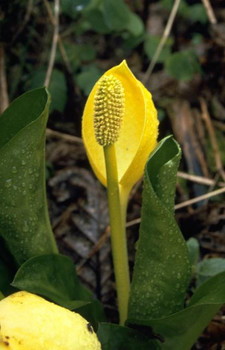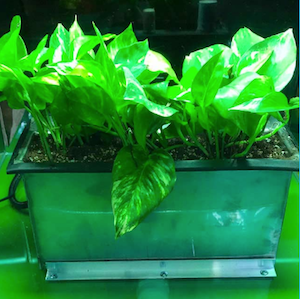We spend close to 90% of our time indoors. Shouldn’t we want to be breathing the cleanest, freshest air possible?

Plants for Air Purification
Though plants don’t particularly look like air filters, they are. Plants emit water vapor that helps pull contaminated air down around a plant’s roots, where it is then converted into food for the plant. The more air circulates through the roots of the plants, the more effective the plants are at reducing pollution. As you might expect, some plants are better air purifiers than others. For example,
· A * Aloe vera, an easy-to-grow succulent that thrives in the sun, helps remove by-products of chemical-based cleansers, paints and more, including formaldehyde and benzene.
· * Spider plant is a quick grower with copious foliage that is almost impossible to kill, despite the worst neglect. In addition to formaldehyde and benzene, it will also filter carbon monoxide.
* Snake plant (shown right), also known by its Latin name Sansevieria trifasciata or its other common name, mother-in-law’s tongue, is also effective at filtering out formaldehyde. It loves low light and the warm, moist conditions found in many bathrooms.
· * Golden pothos is a fast-growing vine that brightens up any room with its yellow and green, heart-shaped leaves. Keep it watered, but it can do well in low light as well.
Other effective botanical air purifiers include English Ivy, Dracaena, Rhododendron, Chinese Evergreen, Bamboo Palm, Heart Leaf Philodendron, and one of my personal favorites, the Peace Lily, pictured above left. (I’ve had a big Peace Lily in my living room for over ten years; in addition to its air purifying properties, I love the beautiful white flowers it sends up a couple of times a year).
If it’s not enough that plants freshen your air, consider how much more content you are in a room filled with at least some plants. Again, research tells us why: According to a University of Agriculture study conducted in Norway, indoor plants can combat fatigue, sore throats and other cold-related illnesses, in part by increasing humidity levels and decreasing dust. Other studies report that hospital patients whose windows have a garden view recover more quickly than those who have to look at a wall. Many companies have also noted that both productivityand creativity increase when employees work around plants.
For me, I particularly enjoy seeing bulbs bloom in the winter months. It sounds so simple, but it really gives me something to look forward to when everything outside is dormant and forlorn.
NOTE: Sponsorships enable us to continue to bring you independent, expert content at no cost to you. Our editorial opinions are unbiased and our own. Thanks.

















4 thoughts on “Indoor Plants for Air Purification”
Peace lilies are my favorite indoor plant. They are often in bloom – bringing joy and do well in poor light with a bit of benign neglect.
Yes – plus don’t you just love the name? 🙂 Thanks for writing!
According to the EPA (Environmental Protection Agency) Indoor Air Pollution is ranked amongst the top 5 health risks in North America.
Do you suffer from any respiratory issues as asthma and allergies or just would like to learn how reduce your Indoor Air Pollution?
Please visit http://www.hyla-us.com or contact HYLA USA directly at info@hyla-us.com
—
Thanks!
Comments are closed.